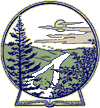October 31, 2018 - The Dark Side
- Teri Franzen

- Oct 31, 2018
- 1 min read
Updated: Dec 6, 2018
Halloween is thought to originate from the Gaelic festival Samhain which marked the end of the harvest and beginning of darker days. The celebration included wearing costumes dressed as harmful spirits to confuse the dead and ward off harm.
For this week's blog, we celebrate this transition into shorter, darker days with tales from the darker side of life and the link between death and life.
This is the story of death.
And life.
And the inextricable link between them.

The predator lays its trap.

For its unsuspecting prey.
Prey is captured.
And devoured.

Remains are left for scavengers.
Many carrion eaters will smell a kill a mile away.
Arriving to pick the carcass clean.

Only bones will remain.

Not all corpses are scavenged.
Some are left to mummify.















Commentaires